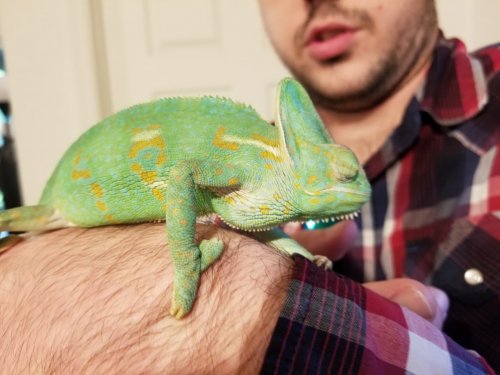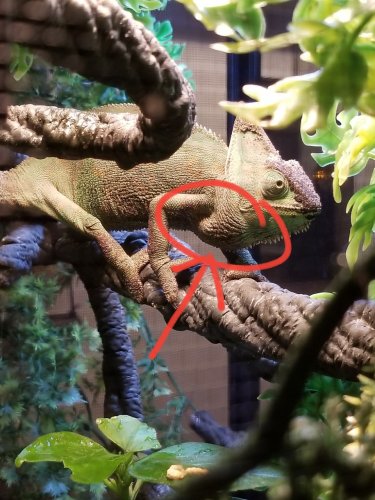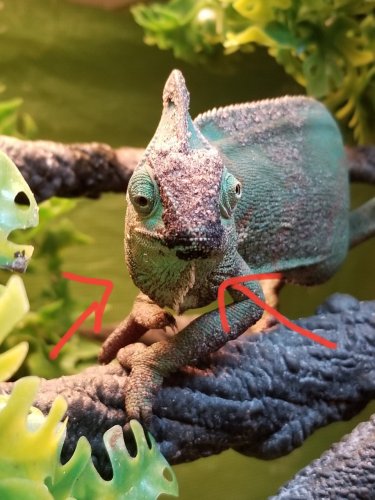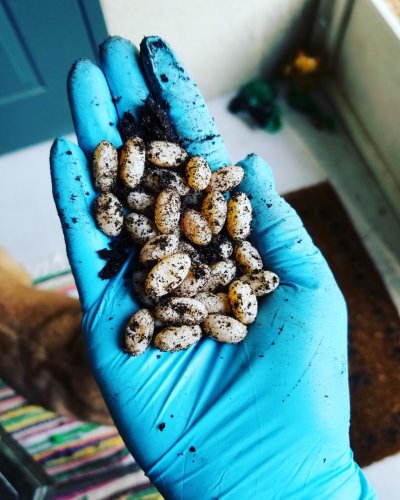KimmieCham
New Member
Hi all -
Last night my veiled laid her first clutch of (32) infertile eggs. About 6 days ago, we noticed a swelling under the gular area which is still present. I have read about the possible causes of gular edema, but was curious if anyone has ever experienced it during gestation/before laying a clutch? Does it ever have anything to do with the calcium levels during/after gestation?
We have had her since Dec 2017 and this is the first time we've ever noticed it (see pics below - the pics of her dirty are today, after laying her clutch, it seems to be more prominent since she's laid)
Thanks for reading!
Chameleon Info:




Last night my veiled laid her first clutch of (32) infertile eggs. About 6 days ago, we noticed a swelling under the gular area which is still present. I have read about the possible causes of gular edema, but was curious if anyone has ever experienced it during gestation/before laying a clutch? Does it ever have anything to do with the calcium levels during/after gestation?
We have had her since Dec 2017 and this is the first time we've ever noticed it (see pics below - the pics of her dirty are today, after laying her clutch, it seems to be more prominent since she's laid)
Thanks for reading!
Chameleon Info:
- Your Chameleon - 8-10 month female veiled
- Handling - once or twice a week
- Feeding - Crickets, hornworms, sweet potato, carrot and some other varied fruits and veggies. For about a week we have been feeding her every other day (prior to this, she was being fed every day).
- Supplements - Calcium w/o D3 every other day, D3 & Reptivite twice a month.
- Watering - We mist her three times a day, for about 2-3 minutes at a time. I leave the dripper on 2-3 times a day for 1 to 2 hours.
- Fecal Description - Normal. Had fecal tested, and it came back with some parasites that were deemed non-pathogenic so there has not been treatment.
- History - Bought from PetSmart. Has been doing really well. Was extremely active this past week to two weeks, went on/off her food (assuming due to being ready to lay her clutch), ate and drank this morning after laying eggs
- Cage Type - ZooMed large cage (18 x 18 x 36)
- Lighting -
Zoo Med Repti Sun Terrarium Hood 20 inch
Zoo Med 18" Repti Sun 5.0 UVB bulb - Temperature - Range from 70 to 90 in the cage, depending on where she goes.
- Humidity - 50-70%
- Plants - Hibiscus and/or Schefflera
- Placement - In one of the main rooms in the house, only two people in my apartment so it's not a busy place. About 3.5 feet off the ground.









